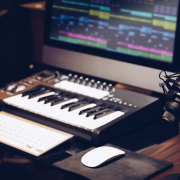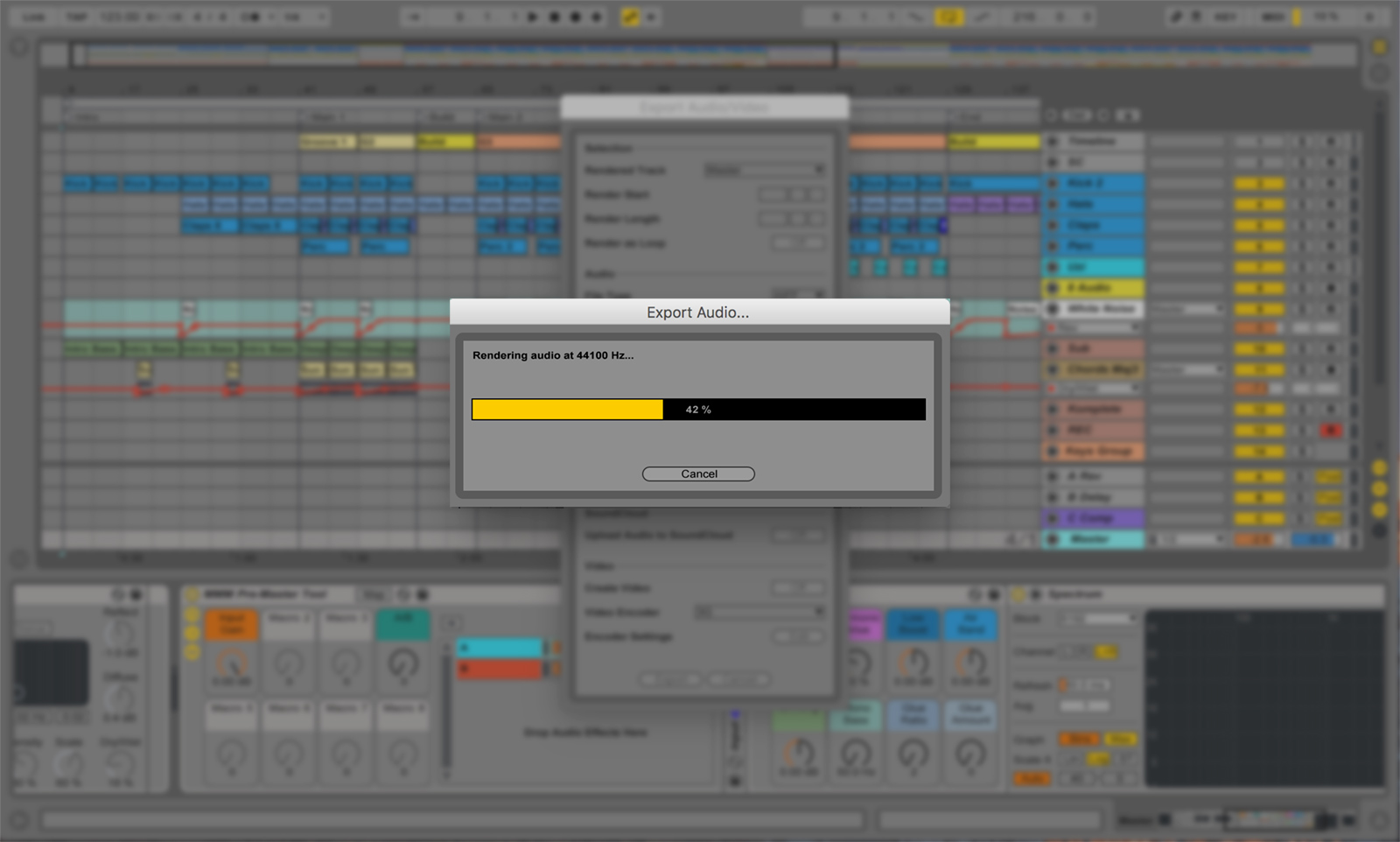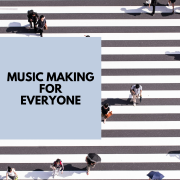The Success Trap
I went to a local club to hear a visiting friend from Romania for an all-night of music that was more aligned with my tastes, and while the DJ before him was a bit linear and predictable, my friend opened up with fresh-sounding music. He didn’t drop the Beatport top 10 music or anything directly linked to the previous DJ, not even an introduction to please the crowd. He dropped some obscure techno, which was a bit audacious, and he quickly followed it with a song from the 90s. The main idea of that track was a vocal saying, “Get House,” which was this song by Caliesto. Beautiful contrast.
Just hearing the sample, I had flashbacks of raves, lasers, glow sticks, and people dancing and sweating, just from a single sample that I heard, which brought me back to a specific era. In contrast to the previous DJ, where all songs blended well together in a seamless flow, there was unfortunately nothing memorable or tangible to grasp from it. I don’t remember a single moment, just a week after. This is not a criticism of someone’s music, but more to say that solid ideas age well because they create intense moments. If you listen to the Caliesto song, you’ll realize it’s relatively simple. Still, the hook is catchy enough for anyone to tell their friends later on about the primary sample, which others can probably remember easily.
It occurred to me that the definition of success has changed since the 1990s. Of course.
Back to DJs
As I got back into DJing, I’m exploring the options available, as numerous tools are now available. For instance, I got a professional account on Rekordbox and paired it with an experienced account on Beatport. This allows me to sync my playlist from the store directly to my Rekordbox, add any songs I want and then have this endless catalogue on hand. It’s basically like having Spotify, where your limitation is your music knowledge or culture. But even if you are new to it or limited, there are discovery tools to help you search what others like and play.
After synchronizing Beatport to Rekordbox and opening the music section related to it, I got overwhelmed. If you know me, you’d know that technology rarely overwhelms me. It took me a lot to get there, but I was staring at the selection and feeling lost. I wasn’t overwhelmed with possibilities; I was confused by how much junk was out there.
I’m not here to criticize the music again, but more from a meta-level, stepping back as a global view.
The number of songs that sound exactly like the previous one was blatant. Some of my favourite artists suddenly make songs with questionable sounds or presets, and many new artists create music with strange, unusable arrangements.
Am I too old for this?
Nah, don’t worry. Once I start digging, I still find a lot of fantastic music. So what happened exactly?
Music Democratization and Open Business Opportunities
In the 90s, electronic music software aimed to allow more and more people to make music by making it more accessible and affordable. This opened the path to countless music lovers interested in making music. I’d be a hypocrite to complain because I was one of those people with no music background; technology was my saviour. Jump 30 years later, add YouTube for knowledge sharing (fueled with the motivation of popularity of likes), and add aggregators who allow anyone with a finished song to access all online stores and streaming platforms. You’ll get albums of barking dogs, techno EPs made by eight years old, fart-fueled drone music and whatever you can think of, you can probably find it.
Is that bad?
It’s not me to judge, but the advantage of people being solid selectors is probably what can make a DJ stand out from their colleagues. But as a producer, I think the question is, can one escape the appeal of the mass wave of music similarity and perhaps be irrelevant?
Absolutely, but this is a tad complicated to cover because it is defined by multiple aspects, such as your Definition of done (DoD), your culture, your community, and what you consider success.
Success Trap
Whatever you see or identify as a “problem” is directly related to a micro-culture of habits that created that situation. For instance, if your bedroom is messy, you have a terrible habit of not keeping it tidy. If you want to clean it, once you have cleaned it, it will remain that way for a day or two until it gets dirty again. The real goal behind this is not to organize your room; it’s to develop cleanliness habits so it remains clean.
We can translate this to the music business as well. A considerable amount of people who consult me in private wish to finish more music because their goal is to be successful, which they translate by having:
- Music being finished
- Signed to a label
Labels see success by releasing music that eventually gets attention and sales. DJs see success with gigs, and Instagram reels with loads of likes.
While there’s nothing wrong with these, the focus is set on something that defines the success of an external party. You might never feel like it’s enough because there will always be options for better, and while it can become addictive, it can also feel depressing. But the appeal of seeing people having many likes, playing on the big stage, and having many streams is an image we might all crave; I can get it.
Seeing success in others as an end goal is a trap because it doesn’t focus on the habits that successful artists built.
Behind the successful DJ is daily research of old and new music, rehearsals, and research, but also many failures. Behind the successful release is the habit of the producer making music every day and making 23 different versions of each song. Behind the successful label is a team that spends time daily networking with media, DJs, and festivals. Behind each role model, there is a lot hidden, and that is where success lies.
While everyone is debating AI music (or images) generating tools, I rarely see anyone talk about how this is aimed at results and bypassing the creation processes and habit forming.
If you focus on having solid habits, results will follow. This starts with keeping your bedroom tidy, making your bed every day, and washing the sheets once a week. In the end, your room will be clean and remain clean.
This is not my pure invention. It comes from a book called Atomic Habits. I discovered that book years ago, and it made such an impact.
Breaking The Standards
In my last post, where I gave points on speeding up your work process, someone asked how this can flood the market with more unnecessary copycat music when I posted on social media. I asked him if my music was, and he said no (I know the person, so it was a good chat). It came down to how you use your speed and the aim of your intentions. But yes, if you work fast and aimlessly, you may get in the queue to make another version of the best seller on Beatport, which has probably already existed 200 times.
But how can one break standards, routines, clichés?
Forming Habits Based Around Originality
This is where it should all start. That implies recognizing what makes a song original, unique, and memorable.
Being more personal in your expression
There are two popular types of producers: those who want to sound like everyone and those who don’t want to sound like the rest. Each faces some issues:
- Sounding like everyone else will not elevate you to the status of a leader. However, it can pay off if you find other people who quickly like the same sounds as you.
- Sounding like no one will marginalize you, making it hard to find your community. When done right, originality can be acclaimed and turn you into an innovator.
But being more personal in your music doesn’t mean turning yourself into an alien. It means you can take known ideas but shape them into who you are. For instance, I love it when there is a melodic harmony in my music (using root keys and scales), but I have a hard time following typical chord progression that is popular in songs (progressive, lo-fi hip hop, etc.). When I make melodies, I just hit keys randomly using my ear and eventually organize my notes to make sense (to me). It’s weird for anyone into music theory because it doesn’t follow convention, but it makes sense because it is not harmonically wrong.
My friend Bryan, a jazz musician, said he preferred my weird melodies to some too-organized songs because ” they sounded more like you.”
A client used his voice to sing notes that he’d convert to midi. He felt like his voice would put to melody, something very personal.
It’s the same for percussion. You can follow conventions or play it weird with whatever you like… while remaining on the grid, so it’s playable by a DJ.
Master one or more music production techniques.
The more you master one technique, the more you can push its boundaries. Using a method on its low level is missing that zone where you can extract ideas entirely different from what everyone is doing. Thinking of J Dilla, he mastered sampling and swing groove, which brought his recognizable signature.
If you think of that Caliesto song I mentioned, it’s also about understanding execution more than just relying on the content.
Cross-pollinate genre inspiration.
If you read my blog, this often comes up. Songs that get attention are usually innovative, and recently, there’s been a news saying that David Guetta has done some country music, which is a good example. You might not like him, but in terms of business decisions, this guy always takes decisions that show the way. This also applies to handling sampling as a way of constantly innovating yourself. If you think you’re mastering that technique, think again.
Splice is also an excellent place to dive for inspiration. Their AI that suggests ideas to start with is pretty innovative and helpful. It allows you to break the routine and pick samples from other genres.
Avoid popular sample packs and presets
I can’t say this enough, but some genres rely on the same packs. Unlike drum and bass with the amen break, it’s a sample. We’re talking about a pack of multiple samples just used and reused to the point where it’s breaking any chances of growing as a musician. Considering the number of samples we can access, I have difficulty understanding why this is happening.
Using the same sample packs falls under wanting to sound like the others. One of the excellent features of Ableton Live 12 is the “Find similar samples” feature, which, with a click, proposes a wide array of options. So, perhaps you can start with a base of a few samples but then dive into your library to get similar-sounding ones.
While advocating for presets, primarily for self-education, I also encourage you to tweak them a bit so you can find various colours you didn’t know you had under your nose. While mastering and listening to a client’s music, it often happens that I’ll go, “Ah, he used this synth with that preset,” which is not a problem, but I find it a bit lazy. But that’s me, which means others might also think that. If you aspire to release it, you might not want a label to believe that of your music.
While there’s no “find similar presets” in Live, you can sort of work around it by creating a macro of your plugin by mapping parameters to knobs (as a group), then creating snapshots of your knobs. If you record yourself playing with your snapshots, you’ll see the knob’s position being recorded as well. Then, you can make a slew between the positions. There’s also a max patch that can do it here.
I hope this helps!
Photo by Matthew Moloney on Unsplash












Leave a Reply
Want to join the discussion?Feel free to contribute!